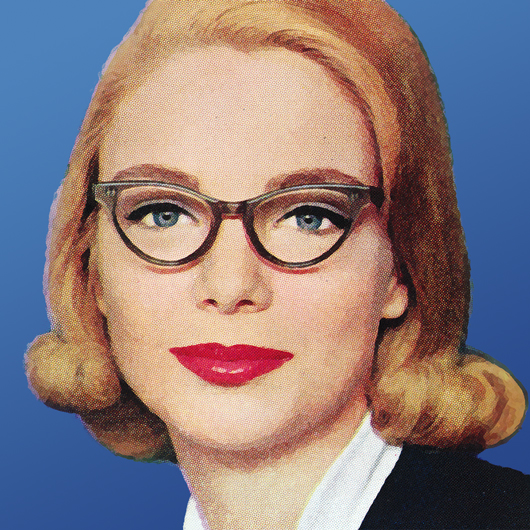At some point in his later years, Marcel Proust wrote to a friend that he had stopped visiting the graves of his maternal ancestors:
There is no longer anybody, not even myself, since I cannot leave my bed, who will go along the rue du Repos to visit the little Jewish cemetery where my grandfather, following a custom that he never understood, went for so many years to lay a stone on his parents’ grave.
This enigmatic sentence has been cited by dozens of scholars as evidence of something essential about Proust’s relationship to his Jewishness. But what exactly does it indicate? Does it reveal his desire to sever connections with his family’s Jewish past? Or does it show a nostalgia for Jewish ritual and a regret about the factors—illness, assimilation, the passage of time—that led to its loss?
The source of this sentence has also long been obscure. A reference to Proust’s letter first appeared in 1923, shortly after the author’s death the year before at the age of fifty-one, in an article by the Jewish writer and critic André Spire, which does not specify the addressee of the letter or how Spire happened to come upon it. In Proust, a Jewish Way, the eminent Proust specialist Antoine Compagnon goes on a search for this missing letter, which he calls the ultima verba on Proust’s connection to Jewishness. Compagnon’s quest to unlock the mystery of Proust’s relation to Jews and Judaism—begun during the pandemic as a series of blog posts—leads him through a century of Proust scholarship and ultimately to the farthest reaches of the formerly walled-off Jewish section of Père Lachaise Cemetery in Paris, where the secrets of Proust’s Jewish past lie buried.
That so much ink has been spilled parsing Proust’s relation to Jewish mourning practices is indicative of a profound shift in Proust studies over the past thirty years. For decades literary scholars focused on philosophical or phenomenological questions—how Proust’s magnum opus, In Search of Lost Time, understands the function of memory or how it represents space. Beginning in the 1990s, however, as they grew increasingly preoccupied with issues of race and identity, the “Jewish Question” in Proust came to the fore, and it has divided specialists ever since. Some have pointed to his Jewish background and to his novel’s many Jewish characters as proof that he belongs with Franz Kafka and Philip Roth in the pantheon of modern secular Jewish writers. Others have denounced his representation of Jewish life in fin de siècle France as antisemitic.
Compagnon seeks to resolve this disagreement by showing how Jewish critics and scholars viewed the Search favorably in the decades following Proust’s death. Not all Proust skeptics will be convinced by his exhaustive reception history, but his book engages readers like a detective novel and demonstrates with impressive erudition how Proust’s sprawling novel functions as a kind of mirror onto which Jewish readers project their own complicated feelings concerning other Jews and the dilemmas of assimilation.
Proust’s mother, Jeanne Weil, came from a family of wealthy, well-educated Jews. Like most French Ashkenazi Jews at the time, the Weils traced their origins to Alsace, but Proust’s great-grandfather Baruch Weil moved to Paris, where he quickly became a successful porcelain manufacturer and a leading member of the capital’s small but growing Jewish community. One of his sons, Godchaux Weil, was a well-known writer within that community. Under the pen name Ben Lévi, he published a series of penetrating short stories and witty social commentaries in Les Archives Israélites, a Jewish newspaper with reformist leanings, as well as a religious primer for Jewish schoolchildren that was widely used throughout the Francophone world.* One of Baruch Weil’s other sons, Nathé, became a stockbroker and Proust’s maternal grandfather.
Proust’s father, Adrien Proust, a prominent doctor, was Catholic and insisted that Marcel and his brother, Robert, be baptized in his faith. Compagnon speculates that Marcel’s parents may have met because Adrien Proust and Nathé Weil frequented the same Masonic circles. Mixed marriages were unusual: in the mid-nineteenth century most French Jews (including most members of the Weil family) married other Jews, even as many ceased to practice the Jewish religion. The persistence of some form of Jewish communal identity among well-integrated nineteenth-century French Jews has been documented by many scholars, but Compagnon unearths fascinating details about the Weils, such as their patronage of one of the capital’s leading Jewish undertakers and their choice to be buried in the Jewish section of Père Lachaise, along the aptly named rue du Repos.
French Jewish integration was called into question at the end of the nineteenth century by the Dreyfus Affair, which led to an outpouring of antisemitism and divided the French nation. It also divided the Proust family: Proust, his brother, and their mother took the side of the Jewish officer who had been falsely accused of treason, while their father sided with the army that accused him. Proust’s advocacy on behalf of Dreyfus—he became intensely involved in the Affair—brought him closer to Jewish society hostesses such as Geneviève Straus and to the half-Jewish composer Reynaldo Hahn, his longtime lover. The Affair also caused tensions in the many relationships Proust cultivated with non-Jewish aristocrats, such as the Comte de Montesquiou, the model for the ferociously antisemitic Baron de Charlus in the Search.
The debate over Proust’s relation to his Jewish identity ultimately turns not just on his personal attachments but on how he represents Jewish characters in his novel. And the Search is full of Jews. While its first-person narrator lacks traits that defined Proust himself—notably homosexuality and Jewishness—Proust projects these characteristics onto a range of other characters. Four of the central figures in the novel are described as being wholly or partly of Jewish origin—Charles Swann, his daughter Gilberte, Albert Bloch, and Rachel. And many of the characters turn out to be homosexual. Proust’s narrator repeatedly compares Jews and homosexuals—for instance, by describing homosexuals as a “cursed race,” a term usually used for Jews, although this pejorative designation, like so much of the narrator’s racial and sexual theorizing, may reflect Proust’s ventriloquizing of the dominant discourse of his day rather than his own views. Attempting to determine what Proust really thought about Jews (or homosexuals) is extremely difficult both because the novel frequently invokes stereotypes ironically, in order to mock them, and because the characters behave in complex ways, often changing and contradicting themselves as they grow older—much as people do in real life.
Compagnon takes issue with recent scholars who criticize Proust for depicting Jews in unflattering terms. One of them, Alessandro Piperno, even titles his book-length study of Proust’s supposed antisemitism Proust antiebreo (The Anti-Jewish Proust or Proust Anti-Jew), to ensure that no one can mistake his central thesis. Critics intent on demonstrating Proust’s antisemitism tend to zero in on the same moments in the novel, such as when the Jewish parvenu Bloch makes a series of cringe-inducing faux pas in the aristocratic drawing room of Madame de Villeparisis. Or when, later in the novel, Bloch restyles himself as the aristocrat Jacques du Rozier but appears to the cynical narrator as an “old Shylock” waiting to go onstage. Or when the Jewish prostitute Rachel seduces the aristocratic Robert de Saint-Loup but appears completely devoid of charm to the narrator. Or when Swann, who leaves behind his successful integration into the highest realms of the aristocracy out of fanatic devotion to the Dreyfusard cause, is described as suffering from a particularly Jewish form of eczema and constipation.
Compagnon attempts to counter these accusations of antisemitism by revealing the positive reception that Proust received among early Jewish critics, especially Zionists. One of the first Zionists to take up the Proust banner was Spire, who came from a well-integrated Alsatian Jewish family but embraced the Zionist cause as early as 1904 and later declared, “Assimilation is death. Zionism is life.” Spire wanted to claim Proust as a Jew at a time when the novelist’s reputation was rising among the Parisian literati, including among the antisemitic critics at the right-wing journal Action Française. Proust’s Jewish background was of course well known to his friends, but its public revelation by Spire provoked alarm, if not surprise, in some sectors of the nationalist right. The antisemitic critic Urbain Gohier fumed:
Recently deceased is a novelist whom I have never been able to read, not fifty consecutive lines; he gave his books extravagant titles; he wrote four hundred pages without starting a new paragraph; these two cheap tricks and his money won him a kind of reputation…. I always smelled a Jew. I was right!
France was where Theodor Herzl invented the idea of modern Zionism and where many of the movement’s most important early theorists, such as Max Nordau, lived and worked. In the 1920s and 1930s young French-speaking Jews launched multiple literary journals, some with funding from Chaim Weizmann’s Zionist Organization, that were dedicated to promoting the Zionist cause among the intellectual and political elite. These journals took a sustained interest in Proust, enlisting the recently deceased author as an unlikely ally in their effort to convince readers that integration into the modern European nation-state was a dead end for Jews and that the only path forward lay in immigration to Palestine.
The strangeness of the Zionist affection for Proust deserves pause, and not just because the effete French writer is the very opposite of the tanned “muscle Jew” that Zionist pioneers were attempting to engender in the collective farms of the Holy Land. It is also strange that these early Zionist readers saw in Proust proof that the project of Jewish emancipation had run its course. One could well imagine the opposite: that his synthesis of so many threads of French literature—critics at the time saw him as a modern reincarnation of the Duc de Saint-Simon and Montaigne—demonstrated just how successfully a “Jewish” writer like Proust had integrated. As Compagnon points out, comparisons of Proust to Montaigne could serve as a coded way for critics to wink at Proust’s Jewish heritage since it was well known that Montaigne had “Jewish blood.” Some of these critics may have been asserting that French literature had always been a melting pot and that nothing prevented Jews and other outsider writers from becoming part of it.
What early Zionist critics, on the other hand, found satisfying in Proust was his depiction of the failures of assimilation. Far from seeing Bloch’s misadventure in Madame de Villeparisis’s salon as evidence of Proust’s antisemitism, they regarded it as proof that the Jew’s attempt at integration was fundamentally misguided. The more Proust heaped scorn on Jews who tried to hide their origins—like Swann’s daughter, Gilberte, who is ashamed of her father and whose attempt to make his name sound less Jewish by pronouncing it “Svann” spectacularly backfires—the more early Zionist critics found in him a kindred spirit. An author who had such negative things to say about Jewish self-hatred could not himself be a self-hating Jew. Zionist critics could also point to passages in the novel that seem to view the embrace of Jewish identity in positive terms. Swann’s late-in-life devotion to the Dreyfusard cause may have given him eczema and constipation, but his newfound “moral solidarity” with the Jews also brings out other, more positive characteristics that Proust’s narrator describes as typical of the “Jewish race,” including a stubborn determination to survive and a prophetic dignity.
Just as Proust’s narrator views Swann’s moral characteristics in racial terms, so too some critics at the time attempted to uncover supposedly Jewish habits of mind or Jewish stylistic features in Proust. Denis Saurat, an academic critic who studied the esoteric tradition in Judaism, averred that Proust wrote like a rabbi and juxtaposed quotes from the Search with selections from the Talmud and the Zohar to prove his point. Compagnon shows how this “dubious” tradition of comparison, ungrounded in philology, was taken up by many later philosemitic critics over the years. It was also taken up by antisemitic critics, including Louis-Ferdinand Céline, who compared Proust’s microscopic observations and elaborate analogies to rabbinic hairsplitting: “The Talmud is more or less constructed and conceived like Proust’s novels, a tortuous, ornamented, disorganized mosaic.”
The Jewish reception of Proust began to shift by the late 1930s, as the Zionist literary journals folded and the threats against Europe’s Jews became more menacing. The first critic to express reservations about Proust’s depiction of Jews was the Dutch Jewish exile Siegfried van Praag, whose “Marcel Proust, Witness of Dejudaized Judaism” appeared in Geneva in 1937. Van Praag’s long essay, the first real academic treatment of the subject, claimed Proust as a fundamentally Jewish writer but refused to take Swann’s “Jewish” resilience as his last word on the subject, focusing instead on his comparison of Jews to homosexuals, which van Praag saw as a “startling” portrait of the morbid state of emancipated Jewry.
This critique was taken up after World War II by Hannah Arendt in The Origins of Totalitarianism (1951), which summons Proust as the prime witness in her indictment of how assimilated French Jews failed to meet the challenge posed by rising antisemitism. Although Arendt acknowledged that Proust was “in emergencies ready to identify himself as a Jew,” referring to his involvement in the Dreyfus Affair, she lumps him in with his fellow French Jews whose misguided efforts to assimilate left them woefully unprepared for the Nazi onslaught. Indeed, Proust’s own family did not escape the Final Solution: his first cousin, the daughter of his mother’s brother Georges Weil, died in the camps along with her husband. Several of his other friends and acquaintances fell victim to the Nazis as well.
It’s clearly unfair of Arendt to blame Proust for not anticipating the Holocaust, just as it’s unfair of critics today to blame Proust for not celebrating Jewish identity in the manner of proud modern Jews. Compagnon doesn’t discuss Jewish critics who praise Proust precisely because some of Proust’s negative views of Jewish “clannishness” seem to anticipate their modern anti-Zionism, but his book demonstrates the problem with their anachronistic reading as well. Compagnon makes a powerful case for judging Proust’s representation of Jews historically, in relation to the categories and the issues of his own time.
However, his reception history has some limitations. To defend Proust against charges of antisemitism, it’s not enough to say that Zionist critics liked his representation of Jews. As Compagnon acknowledges, Zionist critics had their own political agendas and read Proust very selectively. Moreover, they constituted a small subset of his early Jewish readers. The mainstream French Jewish press, as Compagnon shows, largely ignored Proust because their definition of Jewishness was religious and Proust was baptized. To evaluate the import of his representation of Jews, we need a more detailed analysis of how his novel intersected with the political events and discourses that were reshaping what it meant to be Jewish at the dawn of the twentieth century.
Another recent book helps in this regard: Pierre Birnbaum’s Marcel Proust: L’Adieu au monde juif combs Proust’s voluminous correspondence, as well as his fiction, for a record of where he came down on issues of relevance to Jews. Birnbaum shows that Proust’s political values were liberal, despite the fact that he socialized with a number of right-wing nationalists and antisemites. In his fiction Proust often gave voice to nationalist and antisemitic attitudes, but he clearly opposed them in his letters, which help us see the extent to which the Search’s antisemitism was intended ironically.
At the same time, Proust did not share all the opinions of the liberal left: for example, he opposed the separation of church and state (the so-called Combes Law of 1905), which was pushed through by his fellow Dreyfusards, who were angry at the Catholic Church’s complicity in the framing of Dreyfus. Birnbaum also reveals that Proust really was more Catholic, or less Jewish, than many of his later Jewish critics assume or hope. Whereas most French Jews in the nineteenth century retained at least some kind of affiliation with the Jewish world, Proust did not, apart from his friendship with many other non-Jewish Jews. Birnbaum notably casts doubt on the assertion, repeated by biographers, that he asked a rabbi to officiate at his mother’s funeral.
This brings us back to the rue du Repos and to the Jewish section of Père Lachaise, which Proust had ceased visiting by the end of his life. Through a series of fortuitous discoveries, Compagnon manages to track down the famous letter in which Proust recounts how his grandfather “had never understood” why he put a stone on the graves of his parents—an act of remembrance embraced by Jews the world over, often without knowing why. It turns out that the letter was written as a condolence note to Daniel Halévy, a childhood friend and well-known writer whose link to his family’s Jewish past was even more attenuated than that of Proust, on the occasion of the death of his father, Ludovic Halévy, in 1908. It also turns out that Proust actually wrote that his grandfather, in placing the stone, was “following a custom that he already no longer understood” (emphasis mine), suggesting not a complete detachment from Jewish ritual going back generations but rather a more recent forgetting, which Compagnon sees as tinged with regret. Toward the end of his book he narrates his moving pilgrimage to the Weil family tomb in Père Lachaise, still standing though rarely visited, onto which he places a humble stone to honor a great writer and the lost world he depicted.



















 English (US) ·
English (US) ·